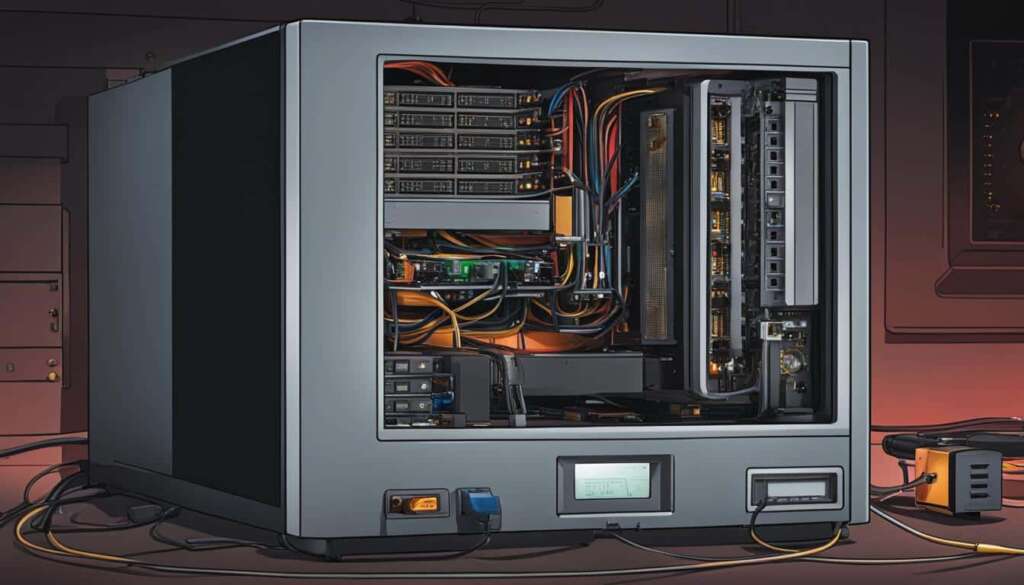Table of Contents
To ensure your power supply unit (PSU) is functioning correctly, it’s crucial to know how to check it on your PC. By following a few simple steps, you can determine if the PSU is the source of any issues with your computer system. This guide will walk you through various methods to effectively check your PSU’s performance and identify any potential problems.
Whether you’re experiencing intermittent power failures, system crashes, or any other power-related issues, it’s important to start troubleshooting by checking your PSU. By doing so, you can avoid unnecessary hardware replacements and ensure that your computer is running smoothly.
In the following sections, we will explore three different methods you can use to check your PSU:
- Using a Paperclip
- Using a Power Supply Tester
- Using a Multimeter
Each method offers its advantages, depending on your available resources and level of expertise. Let’s delve into each method in detail to help you diagnose any PSU problems effectively.
First, we will explore how to check your PSU using a paperclip. This method is especially useful when your power supply seems to be completely dead. It involves a simple yet potentially risky process, so exercise caution and follow the steps carefully to avoid any accidents or damage. Let’s get started with the paperclip method in the next section.
How to Check PSU Using a Paperclip
If you don’t have a power supply tester, you can still check your PSU using a paperclip. This method can help you determine if the power supply is completely dead. It’s important to exercise caution and follow the steps carefully to avoid any accidents or damage.
- First, ensure that your computer is turned off and unplugged from the power source.
- Locate the 24-pin ATX connector that connects the PSU to the motherboard.
- Take a paperclip and straighten it out.
- Identify the green wire and any black wire in the 24-pin ATX connector. The green wire is usually the 4th wire in from the edge.
- Insert one end of the paperclip into the pin with the green wire, and the other end into any pin with a black wire.
- Make sure the paperclip is securely inserted into the pins.
- Plug in the power cord and turn on the switch at the back of the PSU.
- If the PSU fan starts spinning and the components receive power, it indicates that the PSU is functioning properly.
- If there is no response and the PSU remains completely dead, it may be time to consider replacing it.
Remember, this method is only to determine if the power supply is completely dead. It does not provide detailed information about the PSU’s performance or voltage irregularities. If you are experiencing other issues or suspect a faulty power supply, it is recommended to use a power supply tester or a multimeter for accurate testing and diagnosis.
Note: Use this method with caution as it involves working with electrical components. If you are not comfortable or unfamiliar with handling hardware, it is best to seek professional assistance.
| Step | Description |
|---|---|
| 1 | Ensure that your computer is turned off and unplugged from the power source. |
| 2 | Locate the 24-pin ATX connector that connects the PSU to the motherboard. |
| 3 | Straighten out a paperclip. |
| 4 | Identify the green wire and any black wire in the 24-pin ATX connector. |
| 5 | Insert one end of the paperclip into the pin with the green wire, and the other end into any pin with a black wire. |
| 6 | Ensure the paperclip is securely inserted into the pins. |
| 7 | Plug in the power cord and turn on the switch at the back of the PSU. |
| 8 | If the PSU fan starts spinning and components receive power, the PSU is functioning properly. |
| 9 | If there is no response and the PSU remains completely dead, consider replacing it. |
How to Check PSU Using a Power Supply Tester
If you prefer a more convenient and accurate method of checking your PSU, you can use a power supply tester. These testers are plug-and-play devices that allow you to easily test the power supply without the need for manual troubleshooting or potential safety risks.
Power supply testers are designed to provide a quick and reliable assessment of your PSU’s functionality. They come with various connectors that fit into the power supply’s motherboard and peripheral connectors, ensuring compatibility with different types of power supplies.
Using a power supply tester is simple. First, ensure that your computer is powered off and unplugged from the power source. Then, follow these steps:
- Connect the power supply tester to the power supply’s motherboard connector.
- Plug the power supply back into the wall socket.
- Turn on the power supply using its switch.
- Observe the LEDs or digital display on the power supply tester.
The power supply tester will display the voltage levels of the various power supply outputs, such as +3.3V, +5V, and +12V. If the voltage readings fall within the acceptable range, it indicates that the power supply is functioning properly.
With a power supply tester, you can quickly diagnose whether the power supply is the cause of any computer issues you may be experiencing. These devices are highly reliable and eliminate the need for manual troubleshooting, saving you time and effort.
How to Check PSU Using a Multimeter
When it comes to troubleshooting your power supply unit (PSU), using a multimeter can provide valuable insights into its performance. A multimeter is a versatile tool that allows you to measure various electrical properties like voltage, current, and resistance. By utilizing this method, you can gain detailed information about the PSU’s voltage output and pinpoint any potential irregularities or issues.
Before you begin, ensure your computer is powered off and unplugged to avoid any electrical mishaps. Then, set your multimeter to DC voltage measurement mode and locate the main ATX power connector on your PSU. It usually consists of a 24-pin block of connectors. Insert the red and black probes of your multimeter into the corresponding pins, ensuring the correct polarity.
Once properly connected, power on your computer and observe the multimeter’s reading. A stable voltage within the recommended range indicates that your PSU is functioning correctly. However, if you notice significant fluctuations, excessively high or low voltage readings, it may indicate a problem with your power supply’s performance.
By employing a multimeter to check your PSU, you can assess its voltage output, measure its performance, and diagnose any potential issues accurately. Remember, accurate measurements are crucial for identifying problems and ensuring the stability and reliability of your power supply.
FAQ
How do I check the PSU on my PC to ensure it is functioning correctly?
There are several methods you can use to check the power supply unit (PSU) on your PC. You can either use a paperclip, a power supply tester, or a multimeter to determine if there are any issues with your PSU.
How do I check the PSU using a paperclip?
If you don’t have a power supply tester, you can check your PSU using a paperclip. This method will help you determine if the power supply is completely dead. However, it’s important to exercise caution and follow the steps carefully to avoid any accidents or damage.
How do I check the PSU using a power supply tester?
If you prefer a more convenient and accurate method, you can use a power supply tester. These plug-and-play devices allow you to easily test the power supply without the need for manual troubleshooting or potential safety risks. Simply plug the tester into the PSU and it will provide you with the necessary information about its performance.
How do I check the PSU using a multimeter?
Another method to check your PSU is by using a multimeter. This versatile tool can measure voltage, current, and resistance, providing more detailed information about the power supply’s performance. It can help pinpoint any voltage irregularities or issues that might be affecting your computer system.













